Note: This was written by a real person . . . me. There are no popups, no ads, no AI. All photos were taken by me.
In January, Jeanne and I traveled to Portugal and visited three of its many wine regions: the Douro, the Alentejo, and the Algarve. The Douro is world famous for port wine and terraced mountains, the Alentejo for wine and cork production, and the Algarve for wine, coastal cliffs, and beaches.
The Douro Is a UNESCO World Heritage Site
Especially fascinating for me as a soil conservationist are the terraced mountains in the Douro region, one of the oldest demarcated wine regions in the world, having been given that distinction in 1756. The ancient terraced mountainsides and the grapes that produce its famous port wine made this a UNESCO World Heritage Site in 2001: the Alto Douro Wine Region.
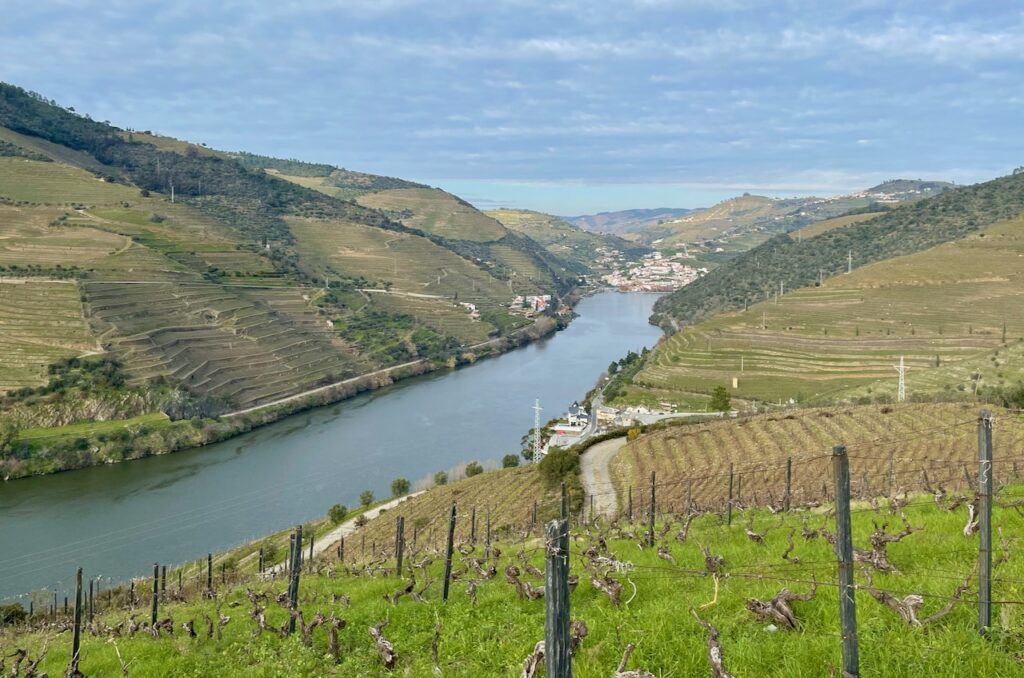
The Douro River with surrounding terraced mountainsides. The village of Pinhão is in the background at the river bend and the winery estate of Quinta de la Rosa is on the left bank of the river.
The immensity of this landscape, so steep I could hardly walk on it, made me want to learn more about terraces. Humans began this ancient soil-conservation practice at least 5,000 years ago. Think about it. If you live in a steep place and want to grow food, you must dig out a flat area for cultivation or rainfall and gravity will wash your plants away. People terraced steep land out of necessity. The Incas, the Romans, the Ifugaos, and the Babylonians are just a few of the many cultures that instituted this important soil-conserving practice thousands of years ago.
So how do you build a terrace? You dig out a level spot and put the earth you dug lower down the slope. Doing this in a line on the slope’s contour, or on the level, makes a terrace. People have been using terraces in the Douro Valley at least since the Romans brought their grapes here over 2,000 years ago.
Vertical Stability Is Imperative
The secret to building a sustainable terrace is to stabilize the vertical surface that supports the flatter surface. It’s a battle between humans, gravity, and rainfall. The most effective defenses against gravity and rainfall are vertical walls built with stone; in the Douro region, they’re made from schistose rock. This method is also the most expensive because it is labor- and skill-intensive. Many of the horizontal surfaces in the Douro support only one or two rows of grapes. They were first maintained by hand, then with mules or horses, and now with small bulldozers and excavators.
The photo below shows three types of terraces. Across the river on the right side are terraces built with stone walls. These are expensive to build but very durable. Across the river on the left are stone-wall terraces that were abandoned in the late 1800s because a phylloxera outbreak wiped out the grapes. After the terraces had been abandoned, olive trees took over.
In the foreground are the “modern” terraces built using heavy equipment such as excavators and bulldozers. These are less expensive and faster to build but not as durable against the forces of rainfall and gravity.
The photo below shows the two rows of grapes on each horizontal part of the terrace. The sloping parts of these terraces are riddled with gullies and require more maintenance than ones built with stone walls.
Terraces for Tobacco Production
My first hands-on experience with terraces was in the early 1980s when I worked in Southside, Virginia, for the U.S. Soil Conservation Service trying to reduce soil erosion from the production of bright leaf tobacco. We laid out contour lines on a one-to-two percent grade and the farmer followed us with a tractor and plow to create mounds of earth and channels for water to move off the fields slowly, minimizing erosion. Rows of tobacco were planted on the contour. Water left the fields in the channels the terraces created.
Tobacco is an annual crop that must be planted every year with cultivation, which disturbs the soil and invites erosion. Storms can cause water to break through terraces and carry soil away. They can be repaired, but not before much damage has been done.
Perennial Crops Are Less Vulnerable to Erosion
Grapes, on the other hand, are perennial plants that are planted once and produce fruit for decades. Their production causes little erosion on the horizontal surface. I didn’t see much erosion in the older terraces with dry-laid stone walls, but there was noticeable erosion from the newer, cheaper, faster-built terraces made without rock walls.
Which raises the question, Are the newer terraces really less expensive if they require more maintenance? Time will tell.
I saw at least five different types of terraces in the Douro region, each created to defend grape production from the forces of rainfall and gravity.
Wine of the Douro Region
Over 150 varieties of grapes are registered in the Douro, some not found anywhere else in the world. The region produces fortified wine and still wine. The fortified wine called port wine can be produced only in this demarcated region. It is wine “fortified” with brandy.
The still wine, classified as Douro DOC is, in my opinion, as good as their fortified wine.
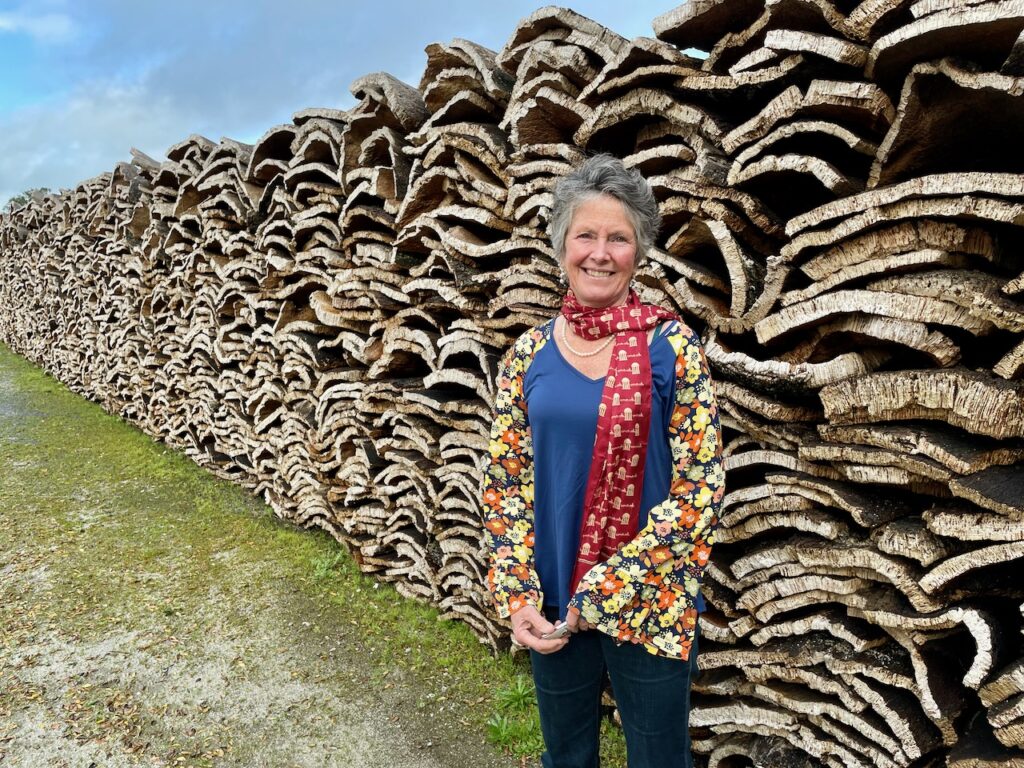
Jeanne in front of a huge row of cork bark harvested from Cork Oak trees in the Alentejo region. Portugal is the world’s leading exporter of cork.
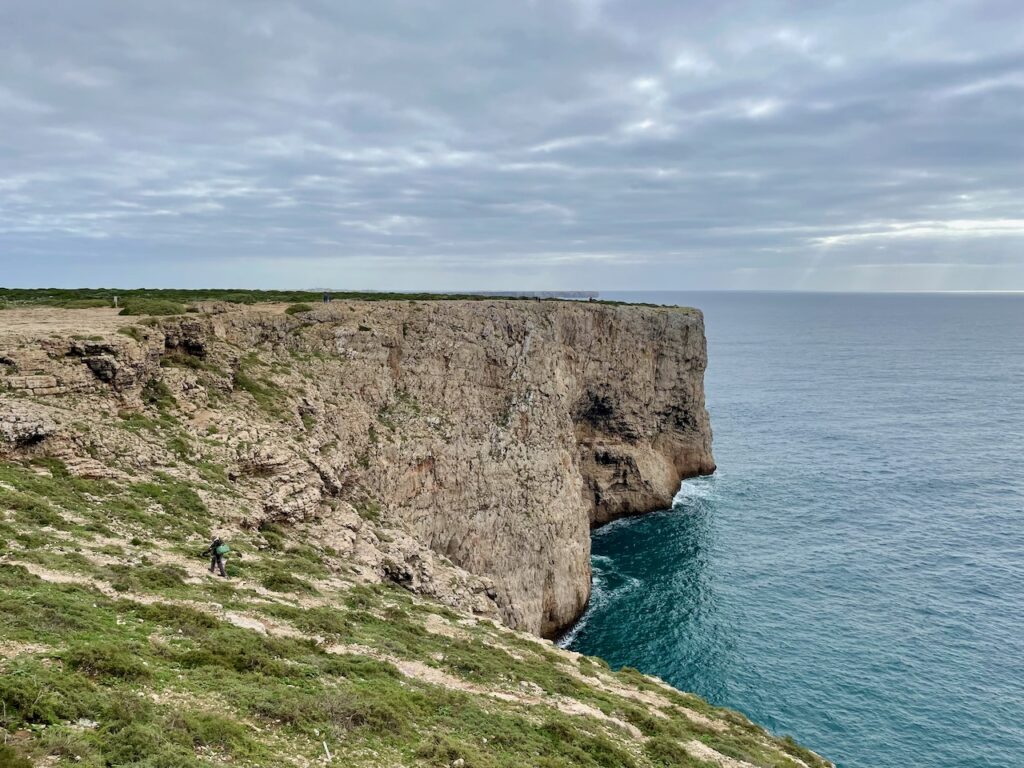
Some of the many spectacular cliffs in the Algarve region, near the village of Sagres, at the southern end of Europe.

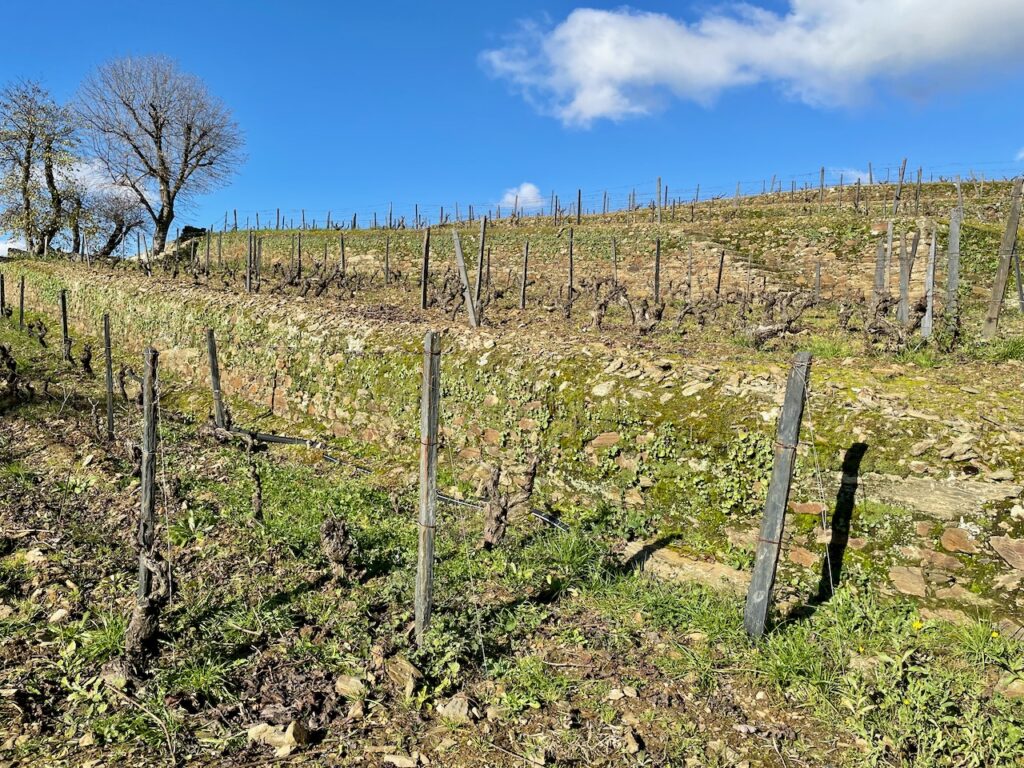
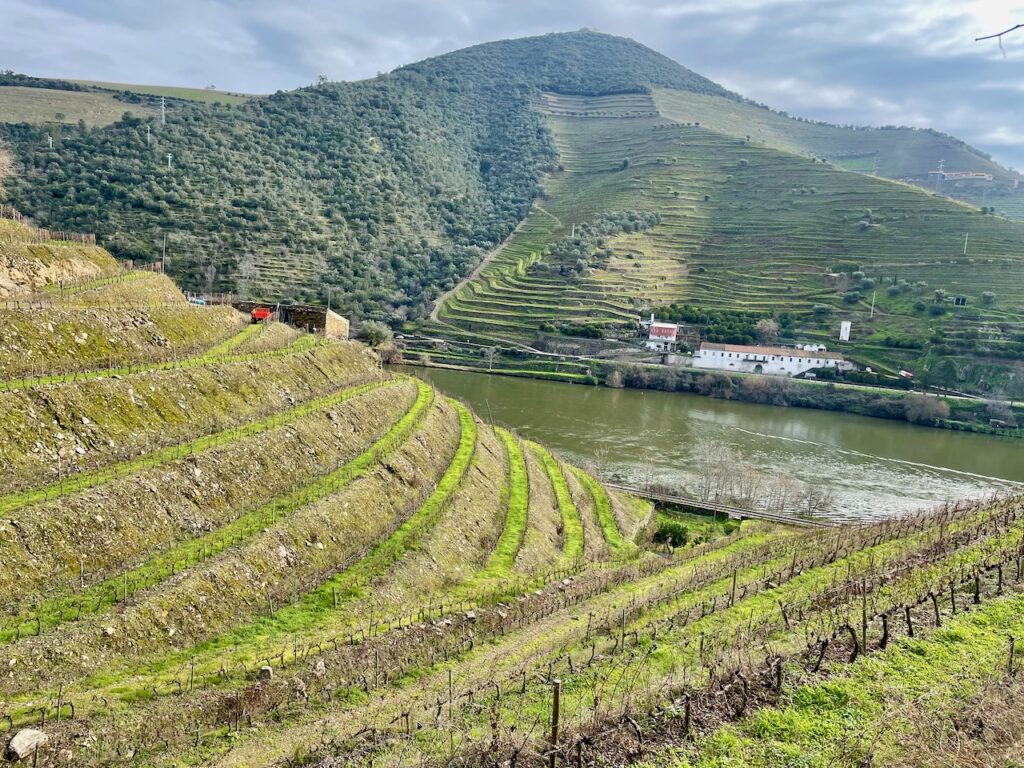
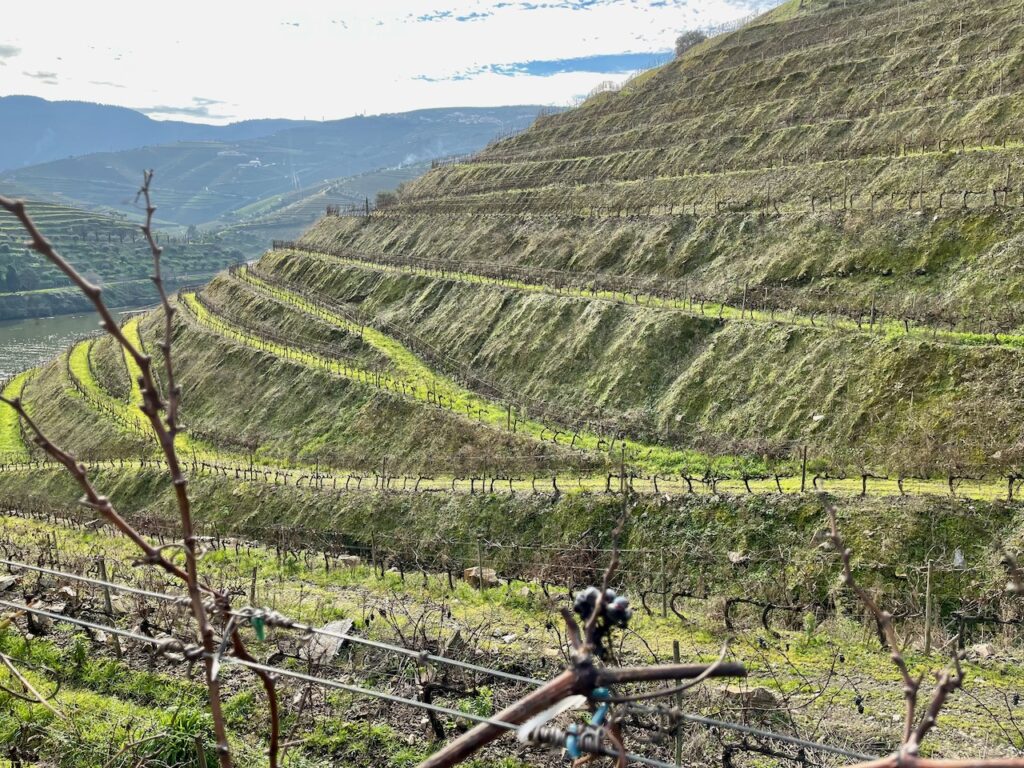
12 Comments
Leave your reply.